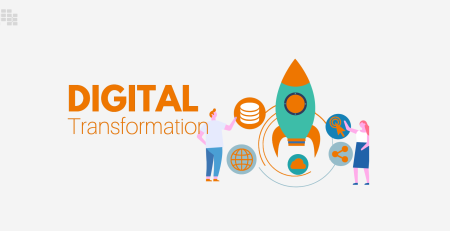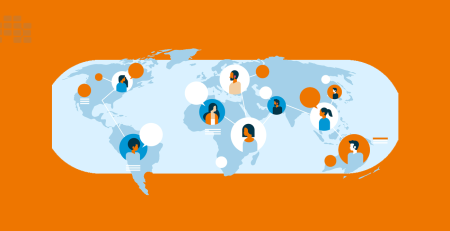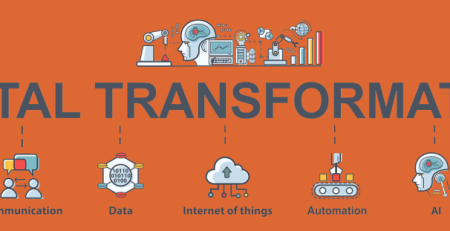Everything You Should Know About Web 3.0
The “Semantic Web,” also known as Web 3.0, is the next step in the development of the internet as we know it. Imagine a world in which the web develops intelligence and connectivity, enabling seamless and intuitive collaboration between machines and people. We are entering a new era of digital interaction with Web 3.0. Machine-readable data paves the way for the development of intelligent systems that can make sense of the large amount of data that is available on the web. Previously unthinkable tasks such as processing and understanding information by computers are now achievable.
At the same time, cutting-edge technology like natural language processing and artificial intelligence make it possible for computers and people to converse more naturally. This has the potential to completely alter not only the way we live and work, but also sectors like healthcare, banking, and education. It’s wonderful to be a part of this shift because Web 3.0 signifies a significant advancement in the development of the internet. We eagerly anticipate what the future of this ground-breaking technology will bring.
The use of machine-readable data in Web 3.0
The usage of machine-readable data on the internet, commonly referred to as the “Semantic Web,” enables computers to comprehend and interpret the meaning of the information being exchanged. This is what is meant by Web 3.0. This might make it possible to conduct more effective and intelligent searches as well as more easily combine data from various sources.
Using machine-readable data may or may not assist you avoid being discovered by AI content detectors. It might make it possible to interpret the information more precisely and accurately, and it might also make it simpler for AI systems to examine and comprehend the content’s meaning. The best method to avoid being picked up by an AI content detector is to produce original, high-quality content that complies with the platform’s laws and regulations.
The ability for computers and humans to interact in a more natural way
Enhancing the efficiency and naturalness with which computers can comprehend and interpret human language is the aim of the branch of study and development known as natural language processing (NLP). This may make it possible to employ chatbots and voice-based interfaces that are simpler to use and comprehend, as well as more natural human-computer interaction.
Voice assistants and chatbots are only two of the many tools and methods presently in use that make it possible for people and computers to communicate more naturally. More research and development are required to make it viable for humans and computers to communicate in a way that is more natural and intuitive. However, there is still space for advancement in the precision and potency of these devices.
Examples of how Web 3.0 is being used in different industries
The usage of machine-readable data on the internet, commonly referred to as the “Semantic Web,” enables computers to comprehend and interpret the meaning of the information being exchanged. This is what is meant by Web 3.0. This might make it possible to conduct more effective and intelligent searches as well as more easily combine data from various sources. Here are a few instances of Web 3.0 being applied in various fields:
- Healthcare: Web 3.0 technologies are being used to better integrate and analyze healthcare data from multiple sources, such as electronic medical records, clinical trial results, and patient data. This could potentially enable more personalized and effective treatment for patients.
- Finance: Web 3.0 technologies are being used to enable more efficient and secure financial transactions, as well as to improve risk analysis and fraud detection.
- Manufacturing: Web 3.0 technologies are being used to improve supply chain management and logistics, as well as to enable more efficient and effective production processes.
- Education: Web 3.0 technologies are being used to improve the accuracy and effectiveness of online learning platforms, as well as to enable more personalized and adaptive learning experiences.
- Retail: Web 3.0 technologies are being used to enable more personalized and targeted marketing and advertising, as well as to improve the accuracy and effectiveness of product recommendations.
These are just a few instances of how Web 3.0 is being applied across several sectors. These technologies have a wide range of other possible uses.
The potential impact of Web 3.0 on society and the way we live and work
The usage of machine-readable data on the internet, commonly referred to as the “Semantic Web,” enables computers to comprehend and interpret the meaning of the information being exchanged. This is what is meant by Web 3.0. This might significantly affect society and how we live and work in a number of ways, including the following:
- Improved efficiency and productivity: Web 3.0 technologies could enable more efficient and effective processes in a wide range of industries, potentially leading to increased productivity and economic growth.
- Improved decision-making: Web 3.0 technologies could enable more accurate and comprehensive analysis of data, potentially leading to better decision-making in a variety of contexts.
- Personalized experiences: Web 3.0 technologies could enable more personalized and targeted products and services, potentially improving the customer experience.
- Increased access to information: Web 3.0 technologies could enable more comprehensive and accessible information sharing, potentially increasing access to knowledge and education.
- Ethical and privacy concerns: While Web 3.0 technologies have the potential to bring many benefits, they also raise important ethical and privacy concerns. It will be important to address these issues in order to ensure that the use of these technologies is responsible and respectful of individual rights.
It’s vital to remember that how these technologies are implemented and used will determine the possible influence of Web 3.0 on society. To maximize these technologies’ positive effects and reduce any negative ones, it will be crucial to carefully analyze all possible outcomes.
Conclusion and future outlook for Web 3.0
The usage of machine-readable data on the internet, commonly referred to as the “Semantic Web,” enables computers to comprehend and interpret the meaning of the information being exchanged. This is what is meant by Web 3.0. Through the facilitation of more effective and efficient procedures, better decision-making, more individualized experiences, and more access to information, this may have a substantial impact on a variety of industries and sectors.
The development and acceptance of Web 3.0 technologies are still in their early phases, but they have the potential to fundamentally alter how we live and work. In order to ensure that these technologies are used responsibly and ethically, it will be crucial to thoroughly analyze the potential ramifications of both their positive and bad uses.
Looking ahead, it is expected that Web 3.0 technologies will develop further and be embraced by a larger number of people, perhaps causing even more significant changes in society and in the way we live and work. It will be crucial to keep up with the most recent advancements in this area and to think about how new technologies might affect both people individually and society as a whole.













Leave a Reply